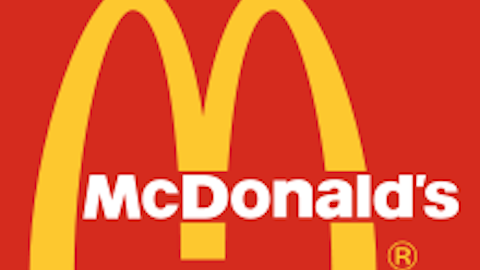It is time to put down your pen and pencil and witness the next rally in the stock market. Just kidding – what I am really trying to say is that Thursday’s trading session could be the floor we have needed to add positions to a stock portfolio.
Going forward
I believe the first round of deflationary monetary policy will be hitting the market in the next couple of years. The effects involve a rotation of cash out of Treasuries into the stock market. This is an environment that heavily favors those who are invested in equities rather than fixed income. That being the case, I want to lay out three opportunities with a good risk-to-reward scenario.
Big Bank
I like JPMorgan Chase & Co. (NYSE:JPM) because I believe this company has a lot of investment potential. It has been able to benefit in an environment of falling loan loss allowances and improving economic sentiment in housing, paired with household formations that outstripped expectations.
It’s only a matter of time before younger adults go from leasing apartments to owning their own homes. JPMorgan Chase & Co. (NYSE:JPM) is also known for operating a lucrative asset-management division. In a stock bull market, this asset-management unit will generate even larger management fees.
The bank compensates its investors with a 2.9% dividend yield, and is projected to grow earnings by 6.3% on average over the next five years, a reasonable rate. Not only that, it pays better than Treasury bonds, making it a compelling investment going forward.
Global retail
I know investors find retail stocks to be very boring. It’s basically about cost cutting, share buybacks, and store openings. But just because the growth strategy is heavily predictable doesn’t necessarily mean that it is worthless. I believe that Wal-Mart Stores, Inc. (NYSE:WMT) is a compelling investment for those who aren’t looking to take too much risk and want to stay the course with a predictable earner.
The company’s earnings growth was somewhat negatively impacted by the dollar appreciation against a basket of currencies. The 4.7% decline in earnings from the international segments was offset with positive comparable-store sales (established stores) within the United States that have grown by 1.3%. The company bought back $2.2 billion in shares during the first quarter, which helped to boost earnings-per-share figures.
Going forward the company is investing into a global e-commerce initiative, which should give an added boost to earnings growth assuming currency markets remain constant. Wal-Mart Stores, Inc. (NYSE:WMT) is projected to grow its earnings by 9.3% on average over the next five years. The company’s growth strategy has been effective from a historical standpoint. Let’s not forget that it pays its investors a 2.5% dividend yield.
Wal-Mart Stores, Inc. (NYSE:WMT) currently trades at a 14.9 price-to-earnings multiple, and while that may be high for some, the company’s business is relatively non-cyclical as the great recession has had a limited affect on earnings. In fact, the company grew earnings every year for the 2005 through 2013 period. The company’s consistency in growth merits a higher valuation.
Wal-Mart Stores, Inc. (NYSE:WMT) has a compelling mix of growth, value, and income; not to mention you get the stability of a well-established retail operation.
Eating out
Everyone must include McDonald’s Corporation (NYSE:MCD) in an investment portfolio. The company is continuing to expand the number of its stores internationally even as it improves the overall dining experience within the United States.
The McDonald’s Corporation (NYSE:MCD) story is still compelling, and going forward the McCafe concept could steal some of the appeal that Starbucks Corporation (NASDAQ:SBUX) has. Either way, both Starbucks Corporation (NASDAQ:SBUX) and McDonald’s are non-cyclical, and both companies have a designated number of customers in a demographic region.
Investors should stay the course with McDonald’s. The company’s 17.9 earnings multiple is a bit high, but on the other hand, it has been able to grow its earnings consistently over the past five years. That being the case, analysts on a consensus basis anticipate this company to grow earnings by around 8.8% on average over the next five years. Plus it pays investors a 3.2% dividend yield for holding onto the stock.
It pays well to be an owner of McDonald’s.
Conclusion
I believe that owning shares of the biggest bank, retailer, and restaurant chain in the U.S. will translate into a solid investment decision going forward. Some may argue that the stock market is trading on thin ice, but even if it were, you want to own these three companies that live on solid ground.
The article How to Go Big in a Bull Market originally appeared on Fool.com and is written by Alexander Cho.
Alexander Cho has no position in any stocks mentioned. The Motley Fool recommends McDonald’s. The Motley Fool owns shares of JPMorgan Chase & Co (NYSE:JPM). and McDonald’s. Alexander is a member of The Motley Fool Blog Network — entries represent the personal opinion of the blogger and are not formally edited.
Copyright © 1995 – 2013 The Motley Fool, LLC. All rights reserved. The Motley Fool has a disclosure policy.





